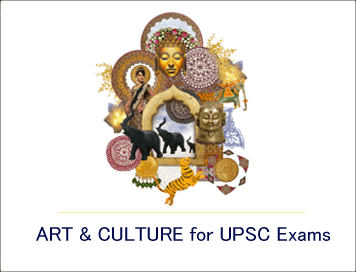(HOT) UPSC Current Affairs 2025 PDF
NEW! The Gist (NOV-2025) | E-BOOKS
Folk Dances of India: Art & Culture for UPSC Exams

FOLK DANCES OF INDIA
Bihu : The Bihu dance is a folk dance from the Indian State of Assam related to the festival of Bihu. This Jogous dance is performed by both young men and women and is characterised by brisk dance steps, and rapid hand movement. Dancers wear traditionally colourful Assamese clothing.
Bhangra is a folk dance conducted by Punjab Sikh farmers to celebrate the coming of the harvest season. The folk dance has been popularised in the western world by Punjab.
Garba is a dance form that originated in the Gujarat region. Traditionally it is performed during the nine-day Hindu festival Navaratri. Either the lamp (the Garba Deep) or an image of the Goddess Durga is placed in the middle of concentric rings and the people dance around the centre, bending sideways at every step, their arms making sweeping gestures, each movement ending in a clap.
Jhoomar is a folk dance performed during the harvest season in Punjab.It is slower and more rhythmic form of bhangara. Though the content of these songs is varied they are usually love with emotional songs too. The Jhoomar is a dance of ecstasy. The dance is performed in circle to the tune of emotional songs.
Gidha is a popular folk dance of women in Punjab. Girls or women form a circle to start performing gidha. All of the them clap their hands and sing small coupl ets that are humorous and spoken in Punjabi language. Then two or three of them come to the centre and perform the dance. Normally, no musical instruments are accompanied with gidha, except sometimes a dholak.
Ghoomar is a traditional women’s folk dance of Rajasthan. It is performed by groups of women in swirling robes, and accompanied by men and women singing together.
Kummi is the folk dance popular in Tamilnadu. This is performed by women. The women stand in a circle and dance clapping their hands rhythmically. One of the women leads the singing with a favourable song while the rest take up the refrain. This dance is usually performed during temple festivals, Pongal, family functions etc.
Changu dance is a popular dance form from Orissa. It derives its name from a kind of drum called Changu, which invariably accompanies the dance. The dance is performed only by women.Men only sing songs , play on the Changu and move with the female dancers with simple s teps . The female dancers dance in a half sitting position with swaying and sometimes jerky movements.
Therukoothu is a widely popular folk dance of Tamil Nadu. Therukoothu commonly occur during the village festivities and become the centre of all fun, frolic and attention of the folk people. Therukoothu is performed in junctions of the villages. Only men take part in Therukoothu even female roles are played by the men folk.
Mayilattom is a artistic and religious form of dance performed in the Hindu temples of Tamil Nadu. Mayilattam performer wear costumes from head to toe like peacock with beak, that can be opened and closed using a thread and performs specific dances. The performer dances not on his bare foot but on a tall piece of wood attached at the end of his feet.
Kavadiattam is a dance performed by the devotees during the ceremonial worship of Murugan the Tamil God of war. Kavadi itself is a physi cal burden through which t he devotees implore for help from the God Murugan.
Raas or Dandiya Raas is the traditional dance form of Gujarat, India where it is performed depicting scenes of Holi and lila of Krishna and Radha. It is performed during Navaratri evenings.
Chhau dance is popular in Orissa, Jharkhand and West Bengal. Unlike other dance forms vocal music in Chhau hard-ly exists. Instrumental mu- sic and a variety of drums pr ovide t he a ccompani- ment. The Chhau dances are complex combinations of Folk and classical dance.
Yaksha gana is a musical dance drama popular in Karnataka. A Yakshagana performance begins at the twilight hours with the beating of several fix ed compositions on dr ums for upto an hour before the ‘actors’ get on the stage. A performance usually depicts a story from the Indian epics and puranas. It consists of a narrator who either narrates the story by singing or sings pre- composed dialogues of characters, backed by musicians playing on traditional musical instruments as the actors dance to the music.
Bamboo dance is tribal dance of Nagaland. This dance form is exclusively performed by girls. They gently jump over the bamboo sticks, which are placed horizontally in parallel spacing over the vertically placed bamboo sticks to form interlace.Two women, who sit on either side of the ground, slide the sticks over the vertically placed bamboo sticks. The dance is accompanied with a rhythmic music from which the dancers adjust their steps.
